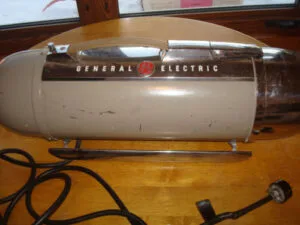I’m Positive You Will Not Know What This Is. Go Ahead And Prove Me Wrong (If You Can)
Change is the one constant we can always rely on, and it’s inevitable. Society, culture, and technology are in a perpetual state of evolution. Consider your own life as an example. How much progress have we witnessed, especially in terms of technological advancements? Reflecting on the journey so far can be both unsettling and invigorating.
Let’s take a moment to consider an intriguing artifact from the past. This peculiar-looking device, resembling a flask or a carrier, might puzzle you. It’s a vacuum cleaner from the 1930s known as the Hercules! Contrasted with modern vacuum cleaners like my Roomba® effortlessly completing its cleaning cycle as I write, the Hercules seems like a relic from a distant era. Imagine the awe it must have inspired when first introduced—a revolutionary piece of technology. Yet, today, we often take such conveniences for granted.
In its time, the Hercules was cutting-edge, even boasting crocodile leather upholstery, making it a symbol of luxury. Its sale during the Great Depression, a period of financial hardship for many, accentuated its extravagance. Show it to your children, and they’d likely struggle to identify its purpose, showcasing how far we’ve come.
Did you know that it wasn’t until 1797 that the broom was finally perfected? Change and innovation have been driving forces throughout history, shaping the world we live in today.

Upon witnessing his wife’s perpetual struggle with sweeping, a farmer from Massachusetts resolved to engineer a more effective solution. Thus, he crafted a broom that truly excelled in its purpose, which he christened broomcorn. This innovation swiftly gained renown. As time progressed, societal tendencies leaned towards reduced physical exertion. Consequently, a myriad of new sweepers and brooms emerged and faded into obscurity until the advent of the initial authentic vacuum cleaner by Daniel Hess in the 1860s. In his patent filing, Hess elucidated, “The crux of my invention lies in drawing minute particles of dust and dirt through the apparatus via an air current.”
In 1869, Ives McGaffey of Chicago expanded upon this concept. However, his contraption proved more cumbersome to operate compared to a traditional broom. His patent application articulated, in part, “the accumulation of dust and dirt within dwelling-houses is a perpetual vexation for all diligent homemakers… My invention aims to alleviate these quandaries.” Unfortunately, the market did not embrace his innovation.
Numerous designs surfaced and vanished in rapid succession. Yet, it was James Murray Spangler who revolutionized the vacuum industry. James, a 60-year-old janitor in Canton, Ohio, meticulously refined his design with unwavering dedication, albeit at the expense of his health. In addition to its upright stance, his apparatus boasted portability, rendering it unparalleled. This rudimentary yet efficient device adeptly extracted grime, expelling it rearward into a receptacle, typically a pillowcase. Spangler resigned from his employment in 1907 to establish the Electric Suction Sweeper Company subsequent to securing the patent for his groundbreaking invention.
His creation harnessed wind through the same principles as a ceiling fan, employing a motor and paddle blades. He integrated a revolving brush from a carpet sweeper and a leather belt to maintain a journal… Achieving such immaculate cleanliness on carpets was hitherto unimaginable without the aid of a powered brush.
![]()






